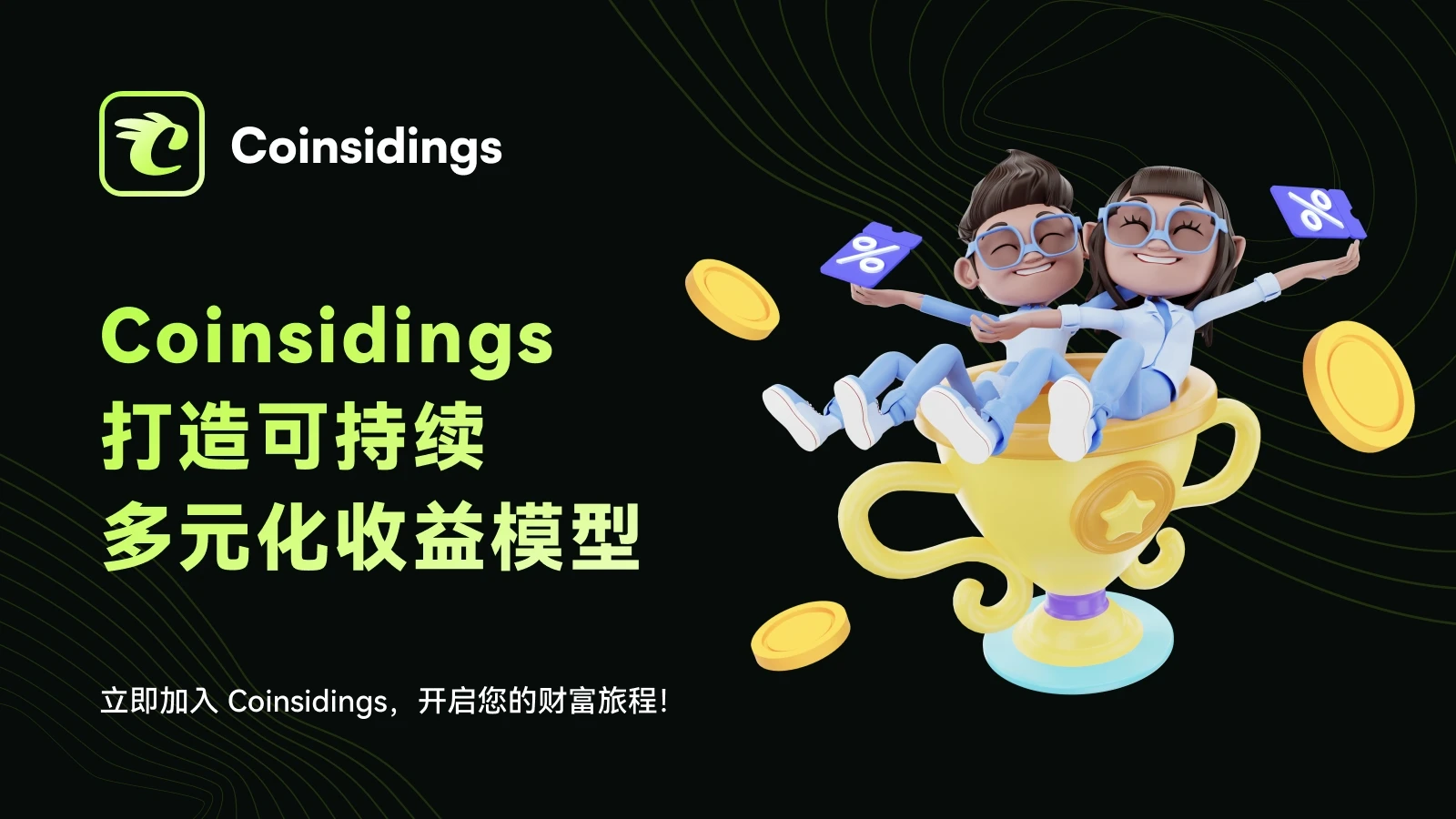1. The Golden Age of RWA: From Concept to Reality
In the past two years, the term RWA (Real World Asset) has rapidly heated up in the Web3 world. From institutional trials to national support, from asset anchoring to application implementation, the on-chainization of real-world assets is becoming the next golden track in the crypto industry.
In 2025, the TVL of RWA-related protocols alone will exceed US$40 billion, with real estate, bonds, artworks, and copyrights becoming the mainstream assets on the chain.
Especially in the real estate sector, the first tokenized apartment project completed by Dubai Land Department and Prypco on XRP Ledger - which raised $2.4 million in 24 hours - marked the official entry of RWA from the technical concept into the implementation era of regulatory support + user awareness + asset availability. The splitting, circulation and appreciation of asset ownership are building a new asset trading ecosystem.
In this wave, Coinsidings became the first platform to introduce tourism assets into the RWA model and conduct systematic product design. It is not a simple NFTization of hotels, but a reconstruction of the ownership distribution structure of the global tourism economy through a complete set of consumption behavior is asset participation mechanisms.

2. Why does the tourism industry need to be RWA-ized?
With an annual output value of over 8 trillion US dollars, the tourism industry is the worlds third largest economy, second only to manufacturing and energy. However, more than 80% of the profits in this industry are concentrated in the hands of platforms and large institutions.
More importantly, the pain points of the traditional tourism industry, such as high platform commissions, poor asset liquidity, lack of user rights, information asymmetry, etc., have not been resolved for a long time, resulting in the behavioral value of billions of users being intercepted by the platform for a long time. Although Web2 OTA has made progress in technology and service experience, users are still essentially pay and get nothing consumers.
Through the RWA model, Coinsidings perfectly combines tourism consumption behavior with the blockchain asset system, giving users actual ownership and income rights. When a user books a hotel on the platform, he not only gets the check-in service, but also the corresponding real estate rights and interests. When a user publishes a route guide or travel sharing on the platform, the content will be confirmed on the chain and automatically receive revenue sharing according to traffic.
More importantly, Coinsidings uses blockchain and smart contracts to make all rights and interests traceable, tradable, and mortgageable, allowing users to complete the full-link process of asset allocation + profit dividend + capital operation like institutional investors while participating in tourism. This is the key path for the tourism industry to truly realize decentralized value distribution in the Web3 era.
3. How does Coinsidings build a bridge between tourism and assets?
In the Coinsidings ecosystem, the CSS token mechanism plays an important role in platform governance, asset mapping and revenue distribution. Users obtain CSS option tokens by participating in new listings, consumer rebates or point redemption. These tokens are released linearly in the form of smart contracts and embedded with a price anchoring mechanism to ensure value stability. When users obtain CSS, they can not only be mapped to CSO equity tokens in the future, but can also be used to participate in RWA projects or circulate in the secondary market, combining practicality and liquidity.
At the same time, Coinsidings has built a membership level system, where users can choose different levels of CHF membership according to their own consumption needs, and obtain exclusive discounts, computing power growth, points rebates and additional option incentives. This system greatly improves user stickiness and repurchase rate, and builds a platform social communication path through the invitation fission mechanism, further expanding the platform user base.
In addition, the platform also provides points exchange, computing power ranking, task incentives and other means, so that every operation of the user can be converted into an asset entry for subsequent participation in the growth of the platform. Through this behavior is equity approach, Coinsidings has truly established a decentralized tourism financial network with users as the core driving force.
4. Digital transformation of tourism real estate led by Coinsidings
Coinsidings is at the forefront of the industry in terms of RWA implementation. The platform has confirmed and tokenized high-quality hotels, resorts, and homestay assets from Southeast Asia, Europe, the Middle East and other regions on the chain, and opened them to global users for subscription in the form of NFT or fragment tokens. This means that users can hold partial use rights and income rights of a hotel with only a few hundred dollars, realizing that assets that could only be lived in in the past have now become investable and tradable digital assets.
Furthermore, the platform incorporates these RWA tokens into the liquidity pool, realizes mortgage lending and pledge mining through DeFi, and opens up the channel for asset flow and income generation. For holders, not only can they cash out during the off-season, but they can also continue to participate in asset appreciation dividends, and even realize income warning and asset allocation through the AI algorithm automatic valuation system.
This two-way flow design of asset service and service assetization makes Coinsidings the first complete platform to realize travel is holding shares, stay is dividends. Here, users are not short-term consumers, but long-term participants in the life cycle of assets.
5. AI and DeFi help: create an intelligent + financial closed loop
Coinsidings 2.0 has made in-depth optimizations in intelligent tools and financial integration. The platforms built-in AI itinerary assistant can generate customized travel plans, intelligent price comparisons, risk identification, and automatic insurance configuration based on user portraits. At the same time, all insurance processes are automatically driven by on-chain smart contracts. In scenarios such as flight delays and accommodation changes, AI contracts can trigger the compensation mechanism in the first place, and funds are instantly credited without manual intervention.
In terms of DeFi tool integration, the platform allows users to mortgage their CSS options or RWA real estate NFTs in exchange for stablecoins CHFT or USDT for the next trip expenses or participation in financial products. Such flexible financial operations not only enhance user liquidity, but also allow Coinsidings to truly possess the dual capabilities of finance + travel.
For early users, participating in the platforms AI+DeFi products can not only obtain immediate benefits such as fee reductions and insurance coverage, but more importantly, accumulate long-term computing power, points and equity mapping paths to build their own wealth growth flywheel.
6. Transformation from Ecosystem Participant to Co-Builder
Coinsidings ecological design no longer regards users as one-time consumers, but gives them the potential of long-term rights holders from the moment they register. The platform guides users to complete the role transformation from experiencers to investors and then to governors through a set of highly visual, executable, and iterative participation paths.
The first step is from awareness to registration. Users can directly access the platform through the AiPay wallet DApp portal or mainstream Web3 wallets (such as Metamask), and complete identity binding while browsing the ecological page. Newbies can first refer to the newbie tasks, FAQ and guide videos to understand the core content such as new issuance rules, membership system, option logic, etc., and establish the first understanding of Coinsidings.
The second step is to enter the asset growth channel by participating in new issuance. The platform regularly opens CSS options for new issuance. You only need to lock mainstream assets such as AIA or USDT to have the opportunity to win the lottery and obtain early shares. After winning the lottery, the system will release CSS in proportion, and at the same time enable platform governance voting, equity dividends, RWA asset participation, etc. Every winning lottery means an asset seeding, and it is also the beginning of establishing a personal on-chain identity weight.
The third step is to become a member of the platform. Users can choose three levels of membership: CHF 99 / 999 / 9999, and upgrade freely according to budget and participation. Members not only enjoy order discounts, weighted computing power, and point rebates, but also have higher-level content contribution rights, invitation code fission rights, and option reward rights. After becoming a member, every consumption, every content creation, and every recommendation behavior of the user will be fed back as platform computing power value, points, and CSS rewards, and finally enter the daily release channel.
The fourth step is to enter the ecological collaboration layer. Users can increase their activity by forming a travel team, uploading travel guides, participating in community operations, organizing offline activities, etc. The platform will allocate computing power based on behavioral data, which will in turn affect the proportion of revenue. Active community users can enter high-level governance nodes, participate in platform governance proposals, project referendums and RWA asset voting mechanisms, and truly define the direction of the platform with consensus.
The fifth step is to become an asset co-builder. When a user starts to hold RWA assets, participate in the construction of liquidity pools, or govern options through the CSS casting platform, his identity is no longer a tourist, but a part of the asset network. He can pledge assets to obtain loan quotas, participate in smart insurance and AI path planning, and even direct behavioral income to asset investment to complete the closed loop of tourism finance.
The sixth step is to build a personal asset portfolio. Through the accumulated CSS, AIA, RWA NFT, etc., users can configure their own on-chain travel packages, flexibly combine them before each trip, and pledge, exchange or lock positions during the rest period. Coinsidings even provides periodic smart strategy recommendations to guide users to efficiently conduct capital turnover and improve capital utilization efficiency.
In the end, users not only realize the experience of spending and earning during travel, but also have an on-chain business card representing their influence and income rights in the Web3 world through systematic asset and identity construction. This is the ultimate value of Coinsidings ecosystem empowerment: everyone can participate, everyone can hold shares, and everyone can govern.
Conclusion: A Web3 asset migration is happening
RWA is no longer a high-threshold tool that only institutions can participate in. It has entered the daily life of every traveler through Coinsidings. When every travel expense can become an asset investment, when accommodation is no longer just a consumption behavior but an equity behavior, and when travel routes can also become the entrance to social fission, the Age of Discovery of Web3 has begun.










